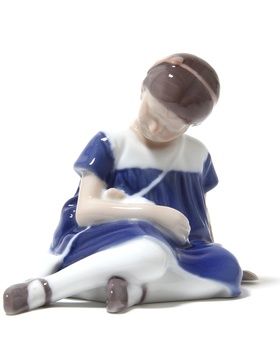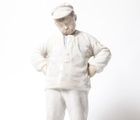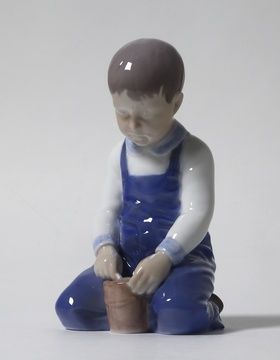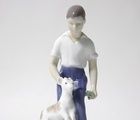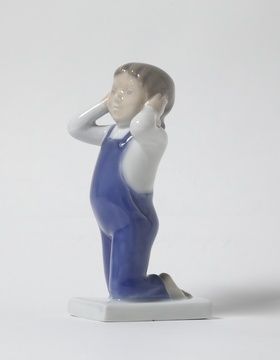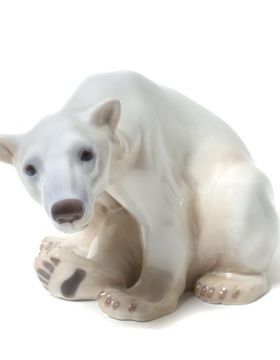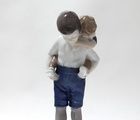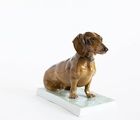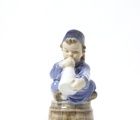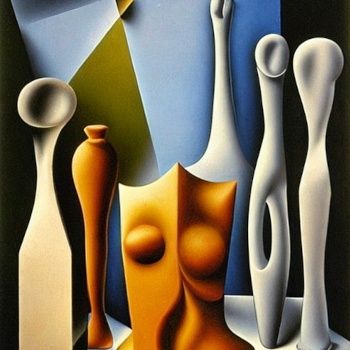
Фарфоровые статуэтки - это красивые и изысканные предметы декора, которые имеют богатую историю. Они были созданы еще в 18 веке и быстро стали популярными в европейской культуре благодаря своей красоте и утонченности.
Фарфоровые статуэтки изготавливаются из фарфора - тонкой и хрупкой керамической массы, которая обжигается при высокой температуре. Этот материал позволяет создавать очень тонкие и детальные фигурки, которые часто покрываются глазурью или декоративной росписью.
Одним из самых известных производителей фарфоровых статуэток была фабрика Meissen, основанная в Германии в 1710 году.
Они создавали невероятно красивые и сложные фигурки, которые были очень популярны в Европе.
В 18 веке фарфоровые статуэтки стали модными среди высшего общества и были использованы для украшения интерьера. Их часто размещали на комодах, полках и каминных полках, чтобы показать свой богатый вкус и статус.
Фарфоровые статуэтки также стали популярны в качестве подарков на свадьбы, юбилеи и другие торжественные мероприятия. Они часто были созданы в виде пары, символизирующей любовь и счастье в браке.
Сегодня фарфоровые статуэтки продолжают быть популярными предметами коллекционирования. Многие люди собирают статуэтки, чтобы украсить свои дома или просто наслаждаться их красотой и изяществом.
Хотя фарфоровые статуэтки могут быть очень дорогими, они все же являются доступными для коллекционеров разных уровней. Многие производители по-прежнему производят фарфоровые статуэтки, которые доступны в широком ассортименте стилей и ценовых категорий.
Многие фарфоровые статуэтки имеют историческую и культурную ценность. Некоторые фарфоровые статуэтки были созданы известными художниками и дизайнерами, такими как Жан Антуан Ватто и Клод Мишель Клодион, и имеют историческое значение в контексте искусства и культуры того времени.
Кроме того, фарфоровые статуэтки могут быть связаны с определенными культурными традициями и обычаями. Например, в Китае фарфоровые статуэтки считаются ценным искусством и имеют богатую историю, связанную с древней культурой и традициями.
Фарфоровые статуэтки также могут использоваться для передачи определенных значений и символов. Например, в некоторых культурах фигуры животных, таких как слоны, львы и драконы, могут быть использованы для символизации силы, власти и благополучия.
Некоторые современные художники и дизайнеры также используют фарфоровые статуэтки в своих работах, чтобы передать определенные идеи и концепции. Они могут быть использованы как элементы сюжета или просто как декоративные элементы, которые помогают создать определенную атмосферу или эффект.
Независимо от того, как используются фарфоровые статуэтки, они остаются красивыми и изящными предметами, которые продолжают привлекать внимание и восторг своей утонченностью и элегантностью.
Стили в фарфоровых статуэтках
В фарфоровых статуэтках существует множество стилей, которые отражают различные периоды и традиции в искусстве и культуре. Некоторые из наиболее известных стилей включают:
Рококо - это стиль, который был популярен в Европе в 18 веке. Он характеризуется изящными, плавными линиями и узорами, цветочными мотивами и изображениями амуров и мифических существ. Фарфоровые статуэтки в стиле рококо часто отличаются своей легкостью и изяществом.
Неоклассицизм - это стиль, который стал популярным в конце 18 и начале 19 веков. Он был вдохновлен древнегреческой и древнеримской культурой и характеризуется строгими, четкими линиями и формами, а также изображениями классических богов и героев. Фарфоровые статуэтки в стиле неоклассицизма часто имеют ярко-белый цвет и гладкую, совершенную поверхность.
Арт-деко - это стиль, который был популярен в 1920-х и 1930-х годах. Он характеризуется геометрическими формами, яркими цветами и роскошными материалами, такими как золото и серебро. Фарфоровые статуэтки в стиле арт-деко могут иметь абстрактные или стилизованные формы, а также декорироваться гравюрами или эмалевыми деталями.
Модернизм - это стиль, который появился в начале 20 века и продолжает существовать до сегодняшнего дня. Он характеризуется смелыми формами, неожиданными сочетаниями цветов и материалов, а также экспериментами с новыми техниками и материалами. Фарфоровые статуэтки в стиле модернизма могут иметь нестандартные формы и необычные текстуры, а также декорироваться различными узорами или графическими элементами.
Это лишь некоторые из многих стилей, которые существуют в фарфоровых статуэтках. Cуществуют региональные стили, которые отражают местные традиции и культуры. Например, в Японии популярны фарфоровые статуэтки, которые изображают гейши и другие символы японской культуры. В Китае фарфоровые статуэтки могут быть декорированы традиционными китайскими узорами и символами.
Каждый стиль имеет свои уникальные особенности, и выбор стиля зависит от предпочтений владельца и того, что он хочет выразить через свою коллекцию статуэток. Некоторые любители фарфоровых статуэток могут выбирать их по временным периодам, предпочитая коллекционировать фарфоровые статуэтки, которые были созданы в определенный период истории, например, в период Виктории или в 19 веке.
В целом, фарфоровые статуэтки представляют собой уникальный вид искусства, который сочетает в себе техническую мастерство и художественную выразительность. Они могут быть драгоценными и ценными предметами коллекционирования, а также использоваться как украшение интерьера или подарок на особые случаи.
